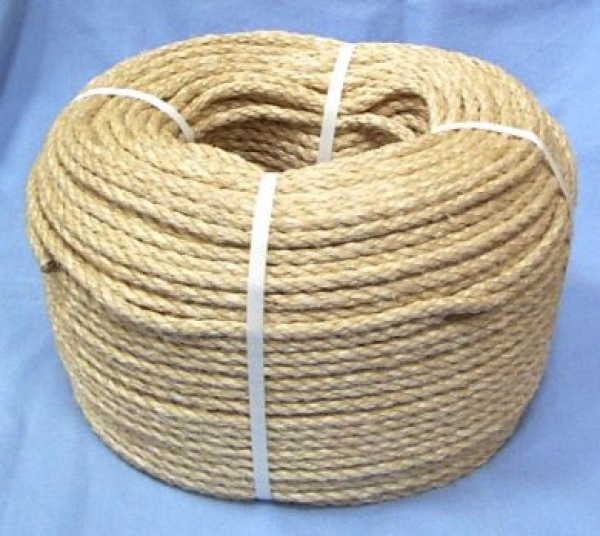Specifications of Sisal Rope
Sizes Available (From Stock) – 3 Strand (220mtr coils) – 6mm, 8mm, 10mm, 12mm, 14mm, 16mm, 18mm, 20mm, 24mm, 28mm, 32mm, 36mm, 40mm.
About Sisal Rope
Sisal rope - Is an agave that yields a stiff fibre traditionally used in making Twine, Rope and also dartboards. The term may refer either to the plant or the fibre, depending on context. It is sometimes incorrectly referred to as sisal hemp because Hemp was for centuries a major source for fibre, so other fibres were sometimes named after it.
Fibre is extracted by a process known as decortication, where leaves are crushed and beaten by a rotating wheel set with blunt knives, so that only fibres remain. In East Africa, where production is typically on large estates, the leaves are transported to a central decortication plant, where water is used to wash away the waste parts of the leaf. The fibre is then dried, brushed and baled for export. Proper drying is important as fibre quality depends largely on moisture content. Artificial drying has been found to result in generally better grades of fibre than sun drying, but is not feasible in the developing countries where sisal is produced. In the drier climate of north-east Brazil, sisal is mainly grown by smallholders and the fibre is extracted by teams using portable raspadors which do not use water. Fibre is subsequently cleaned by brushing. Dry fibres are machine combed and sorted into various grades, largely on the basis of the previous in-field separation of leaves into size groups traditionally used for rope and twine, sisal has many uses, including paper, cloth, wall coverings and carpets.
Characteristics -
Buoyancy – Sinks
Acid Resistance – Poor
Alkali Resistance – Good
Abrasion Resistance – Poor
Uses – Lifting, Lashing & Agricultural.

